 4
4
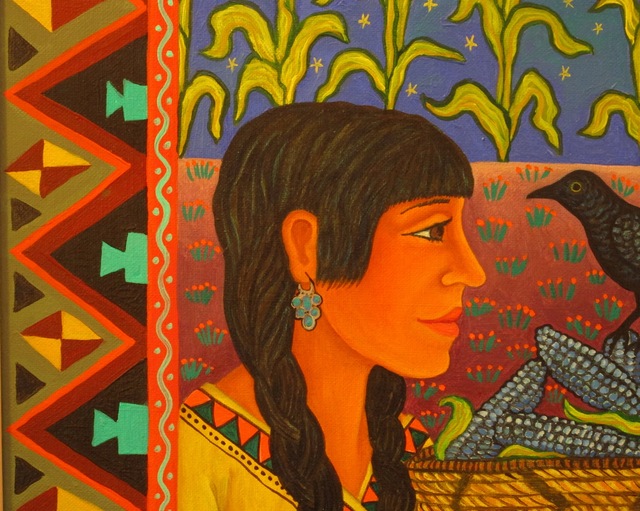
Blue Corn Black Crow
The work of Diana Bryer
by Lilo Bowman
Tucked along a two-lane road near the town of Española, New Mexico, is the home and studio of Diana Bryer, an artist whose work expresses her love of the people and the history of her state through richly detailed, colorful, and charming scenes.
Born in Los Angeles, Diana enrolled at 17 at the Chouinard Art School with a plan to study the commercial arts. The death of her father forced her to take a semester off from her formal studies, but she continued to paint at home. It was during this time that Diana, whose dream had always been to illustrate children's books, decided to shift her focus from commercial art to illustration. When she announced her decision to the head of the department at art school, she was summarily dismissed! Bound and determined to become an artist, she continued her independent study, using art books from her local library to continue her training. She was especially drawn to the works of Mondigliani, Van Gogh, and Matisse, as well as to Indian and Persian miniatures.
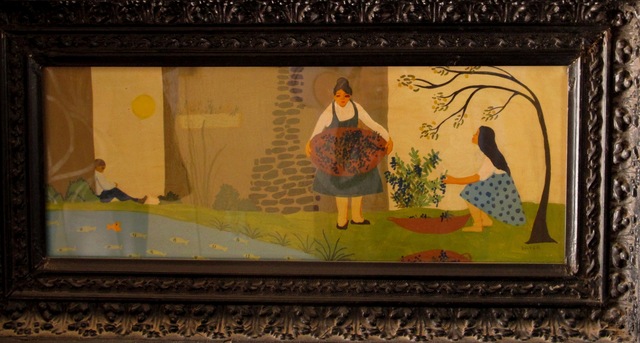
To help with family finances, Diana began selling her work on the street, sometimes for as little as $25. Despite the lack of formal training, she began to develop a recognizable personal style, which she calls "the Jewish Gypsy style." Slowly, she began attracting attention and—by the age of 25—was the subject of five one-woman art shows.
A move to a rural community in New Mexico in 1977 inspired Diana to marry her ornate decorative work with the rich history and customs of the peoples who had long ago settled in the region. She became especially interested in the Jewish descendants of those who escaped the Spanish Inquisition to settle in the northern part of her new home state. Her own family descendants are Jews from Belarus.
Diana's home is filled with antiques collected from around the globe. Since she prefers to paint in natural light, she works seated in a comfortable chair at an easel positioned near a window. Her seven-year-old granddaughter, who also enjoys painting and drawing, is often nearby.
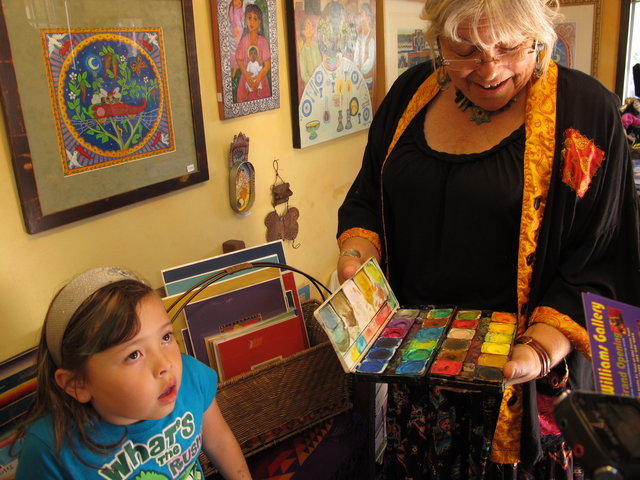
Diana considers each painting to be like a puzzle, revealing itself as she goes along. She begins by drawing freehand with a pencil on an unpainted canvas; then, using a smallish paintbrush and raw umber, she paints over the pencil sketch. It is at this point, before any color is added, that she can edit the piece to her liking.
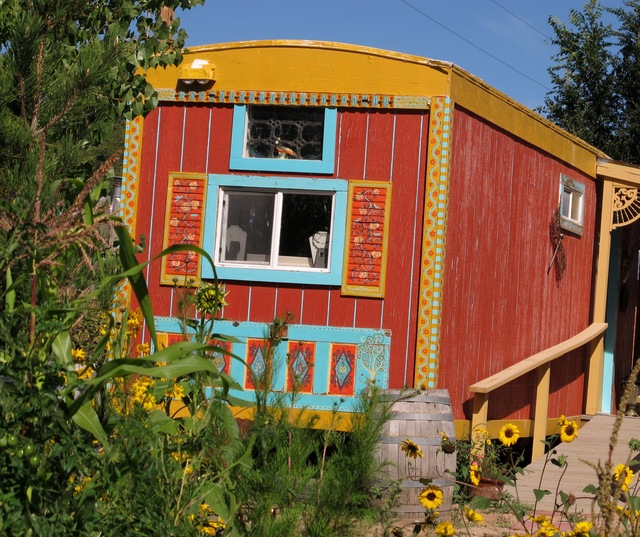
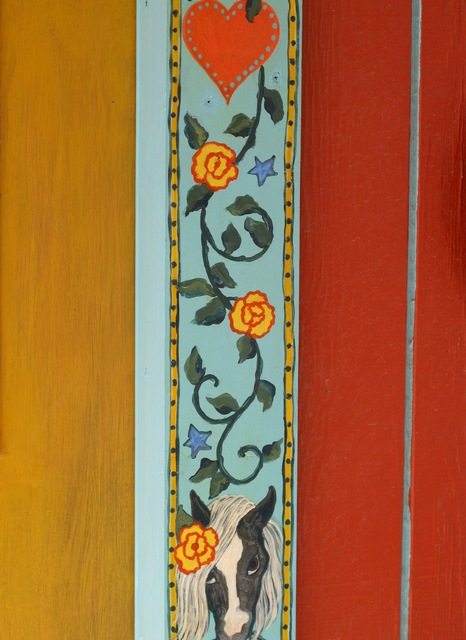
A brightly painted red trailer, adorned with swirls, dots, and animals of every kind, serves as Diana’s shop. She has always been drawn to Gypsies, so she calls this her Gypsy Caravan. As you step inside, you're greeted by a warm wash of yellow walls, embellished with an array of Diana's painted works, both large and small. The back wall is painted with a series of "faux windows" which adds to the whimsical effect.
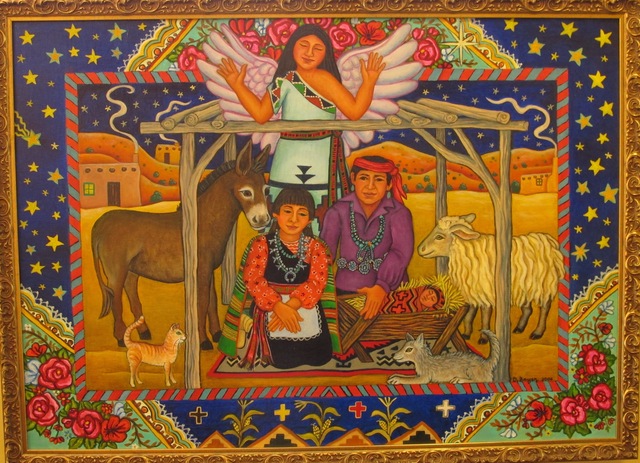
Pueblo Nativity
In looking at Diana's work, one immediately is struck by her love of visual texture, animals, and nature. Whether the piece depicts a Seder meal or a nativity scene, the viewer is drawn quickly into the myriad beautiful details. Often, she incorporates a decorative border-within-a-border into the work. (In the case of Pueblo Nativity, the lower corners resemble a decorative scarf.) As the eye moves about the painting, new and unexpected details are revealed.


Seder Dinner
Look closely, for example, at the scene in Seder Dinner, and you'll notice salt, bitter greens, and unleavened tortillas on the table. A traditional micaceous clay pot rests on a stove in the background. (You may recall reading about micaceous clay pottery when we visited the studio of Charles Carrillo.)
To contact Diana visit her website here.
To see more of Diana's work watch a slide show here.





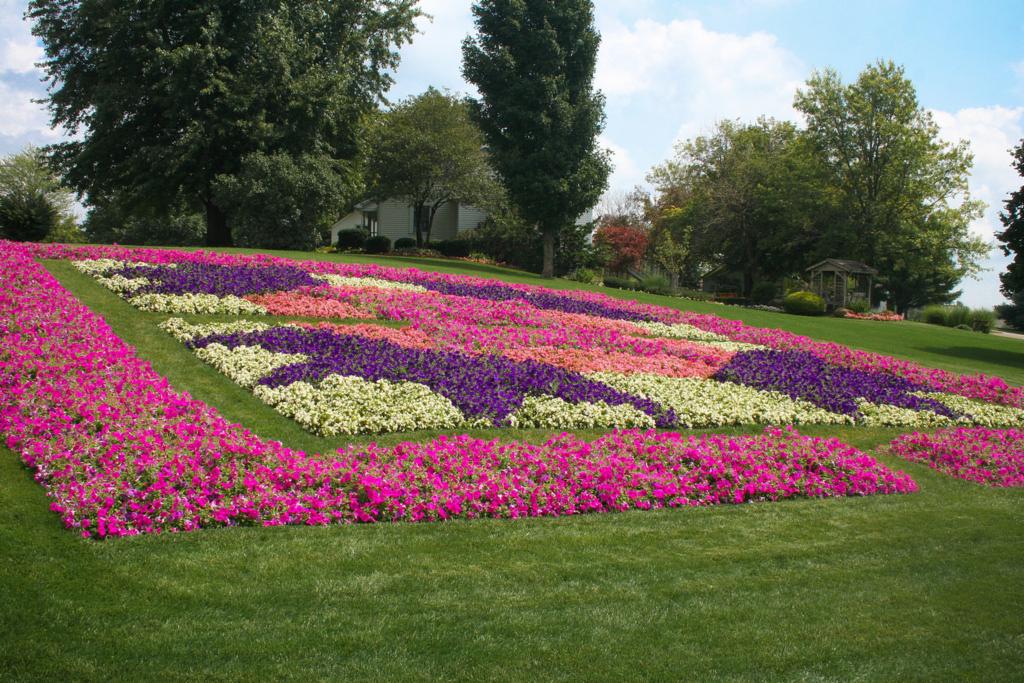











.jpg)


